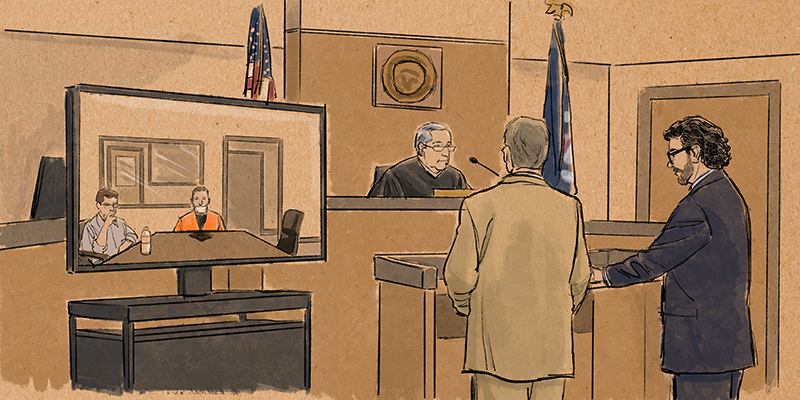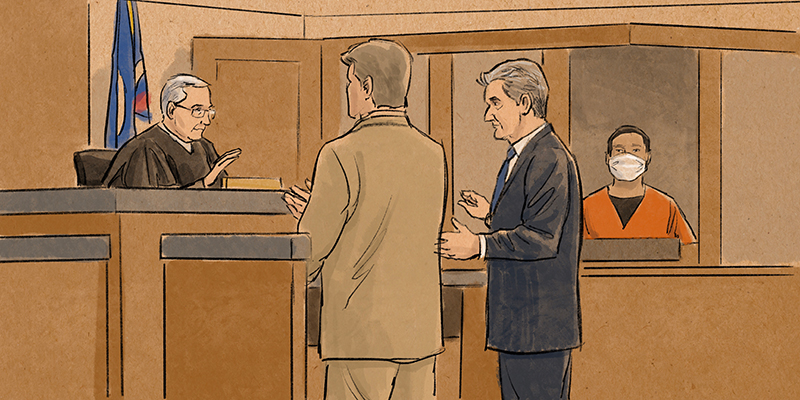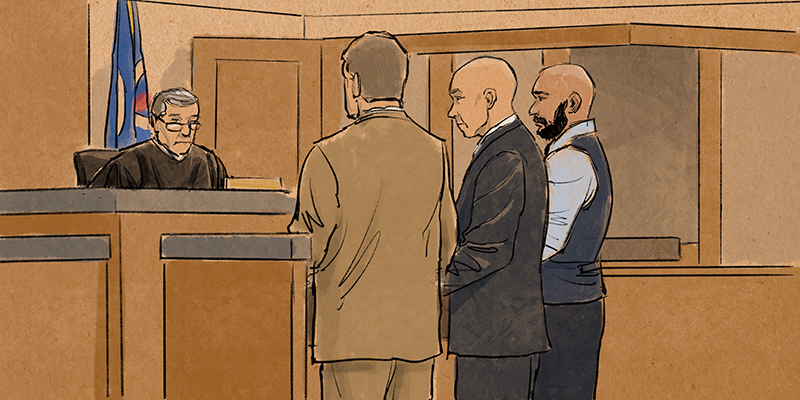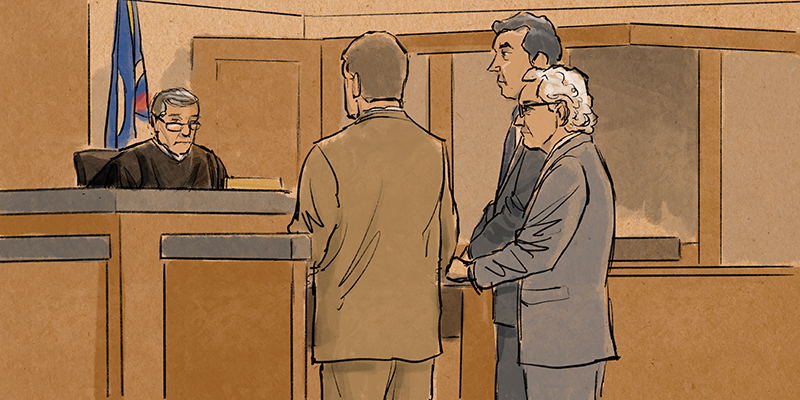30 Jun Courtroom Sketching at Yesterday’s George Floyd hearings
Yesterday (June 29, 2020) I was in a Minneapolis courtroom drawing sketches for brief hearings in the death of George Floyd. Four officers are being charged and each one got a separate hearing before the judge. These were short preliminary hearings lasting about ten minutes each, back to back. So I had to draw very quickly, roughing in poses and colors and then finishing up the drawings by memory afterward. (The actual trial is tentatively scheduled for March 2021).




For years now whenever a big news story happens in or around Minnesota I’ve been there to sketch the proceedings. It doesn’t happen often (roughly once or twice a year on average) but when it does it’s always fascinating. My first case involved the capture of drug kingpin Michael Gamboa in Fargo circa 2003. Over time I’ve sketched a school shootings, an ISIS terrorism recruitment, kidnappings, murders, fraud, and police shootings. I was in court for hearings about the Vikings boat scandal, the death of Prince, the man who confessed to the kidnap and murder of Jacob Wetterling, and the police shootings of Philando Castile and Justine Damond. You can view a gallery of my work at courtroomsketches.com.
For an artist courtroom sketching has several challenges:
- Digital drawing is usually prohibited. In Minnesota cameras are generally not allowed in the courtroom (although that is slowly changing. You can read about some of the pros and cons of allowing cameras here). Since an iPad has a camera and could be used to record audio, they are often not allowed in court. Ultimately it’s up to the judge but nine times out of ten I have to lug in a giant drawing board and a bag of supplies and try to draw on my lap while I’m wedged into a crowded gallery. At yesterday’s hearing I was allowed to draw on my iPad but that’s rare.
- Time pressure is intense. Before a trial gets underway there are usually at least two or three preliminary court appearances that last just a few minutes each. I have to rough everything in quickly and make notes about all the colors, hair styles, clothing, likenesses, etc. so that I can finish the drawing after everyone has left the room. Also, today’s news cycle spins at dizzying speed. There are multiple news trucks waiting outside so they can photograph my drawings and edit them in time for the next broadcast. I just don’t have the luxury of being fussy. While I don’t advocate sloppiness, I’ve nevertheless had to accept that some of my courtroom sketches will not be masterpieces. I have to remind myself that this is a disposable art form that people will view for a few seconds on a screen and then forget about. So I just do the best I can in the time allowed.
- You may or may not get a good view. When I first walk in the courtroom is usually empty. The news media and the general public start filling up seats in the gallery, which can get crowded. Finally the lawyers and the defendant enter the room and sit at their tables. Only then do I find out if I have a good view or not. One time I had the defendant sit directly in front of me with his back to me the entire time! So, before the trial I try to print out some photo reference of the key players to help with likenesses in case I have a less-than-ideal view. I also use a photographer’s monocular to help me zoom in and see details on the people on the far side of the room who can be as much as thirty feet away.
- You draw what you see, not what you feel. Real life trials are nothing like what you see in movies and TV. The lawyers don’t pace around the room shouting clever “gotcha” questions that cause witnesses to break down in tears. In reality the attorneys must stay sedated at their tables and politely question the witness from across the room. At times the questions can be belabored and technical. If things do get personal witnesses are often coached to stay calm and keep their cool. So people wind up discussing heavy emotional events with calm tones and stiff body language. Most of the time it feels like I’m drawing not a dramatic trial but a budget meeting in a corporate board room.
But if that’s what I see that’s what I have to draw. A dramatic pose or an angry face might do a better job of capturing the subtext of the moment (plus it would be more visually interesting) but if that’s not what really what happened, I can’t draw it that way. My job is to objectively show how the players behaved and NEVER editorialize. Ideally our court system is designed to pursue fairness. Anything I draw that overlays my opinion on top of that risks polluting those waters.
Courtroom sketching is fascinating and a nice change of pace that gets me out of the studio. Most of my client work is cartoony and colorful so it’s nice to go back to my life drawing roots now and then.
The next hearing for the George Floyd case is scheduled for September 11. Look for more courtroom drawings from me then.


